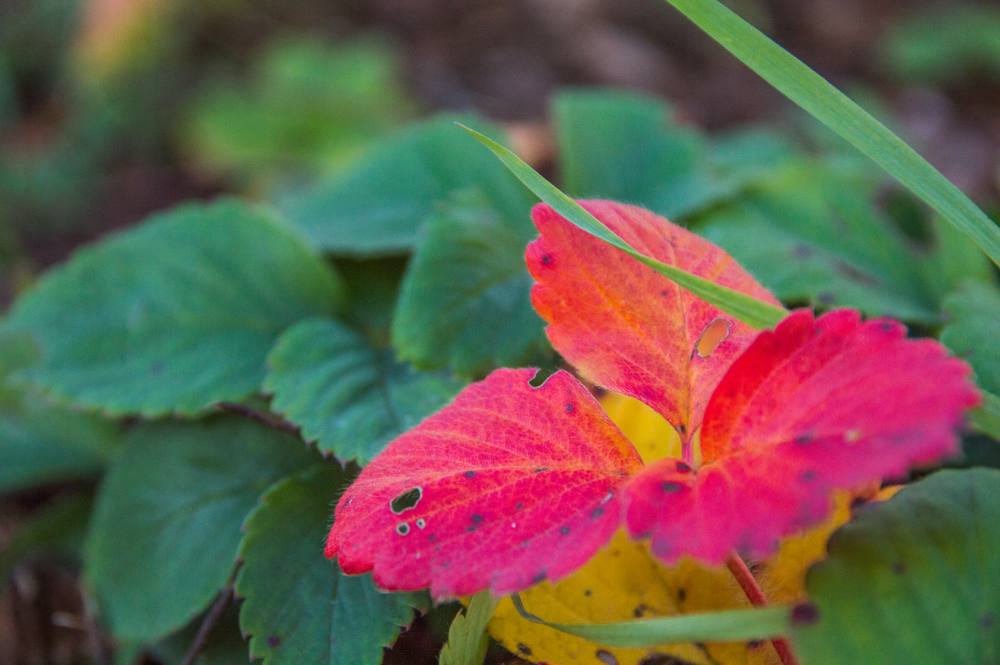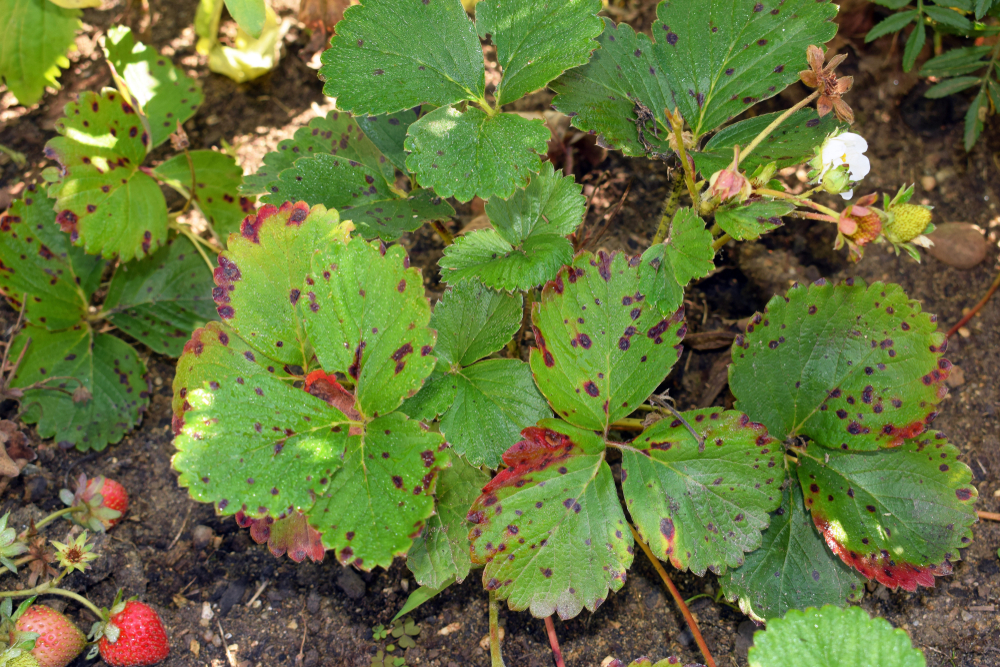Growing your own strawberry plants can be a satisfying experience. Having fresh fruit to pick can be an excellent way to save money at the grocery store and get essential vitamins and nutrients. However, if your strawberries have red leaves, your plant is trying to tell you something.
Here, we examine the causes of red leaves on strawberry plants and what you can do about it.
Why Your Strawberry Plant Has Red Leaves
Strawberry leaves should show green hues, but if they start turning other colors, like red, you need to take action as soon as possible. But, to help your fruiting plants, you must determine the underlying cause of red leaves to treat them appropriately.
Some possible causes for red leaves on strawberry plants include:
- Acidic or alkaline pH levels
- Colder weather
- Deficient in phosphorus or nitrogen
- High amounts of carbon in the soil
- Fungal diseases
- Old plants
Acidic or Alkaline pH Levels
The pH level of the soil where you house your strawberry plants is critical for their health and viability. Strawberries prefer a neutral pH of 7.0 to thrive. However, if the soil is too acidic or alkaline, you may find red leaves on your plants.
You can test the pH level of your soil with litmus paper or other simple home methods, like using vinegar, if you suspect it is too alkaline.
Colder Weather
As the cooler temperatures arrive, your perennials will begin to go dormant. However, if you have a cold evening, the dip in weather can affect the leaves. One indication of colder weather overnight or as fall approaches are red leaves.
Thankfully, if this is the cause for the changing colors, your plants will be just fine.
Deficient in Phosphorus or Nitrogen
Fruiting plants like strawberries require specific nutrients, including phosphorus, nitrogen, and potassium, to provide berries. If the leaves on your plant turn red, this can point to a deficiency in phosphorus or nitrogen.
You can determine if your soil is deficient by purchasing a testing kit. For example, if your strawberries need more phosphorus, you can add bone meal or phosphate. Likewise, you can add blood meal, fish, soy, or alfalfa for plants requiring more nitrogen.
High Amounts of Carbon in the Soil
Strawberry plants may have red leaves because of the high amounts of carbon in the soil. Items that contain carbon are pine needles, straw materials, and sawdust. Try to limit the volume if you use any of these products around your strawberries.
Fungal Diseases
Various fungal diseases can affect your strawberry plants by turning the leaves red. Some more common ones include:
- Leaf Scorch
- Leaf Spot
- Red Stele Root Rot
Fungal diseases are more prominent when the soil is too moist. If you suspect your strawberries are suffering from fungi, trim back any red leaves with shears or clippers, making sure to clean them each time so you will not spread the disease further. Monitor the soil for overwatering and ensure there is ample drainage.
Old Plants
Sometimes old leaves will turn red as they die off. If your strawberry plants do not have any other symptoms and you have ruled out other causes, the leaves may be old. However, as the plant starts to go dormant for the winter months, leaves can turn yellow, orange, and red, which is entirely normal.
Save Your Strawberries From Red Leaves
Anytime your plant’s leaves change color, it indicates something going on. For example, your strawberries may require more or fewer nutrients in the soil, are suffering from fungal disease, or they can be turning color because of colder weather and going dormant.
Once you narrow down the cause, you can easily save your strawberry plants and keep them thriving for years. Keeping an eye on the leaves is an easy way to tell if your plants need extra care and attention.

